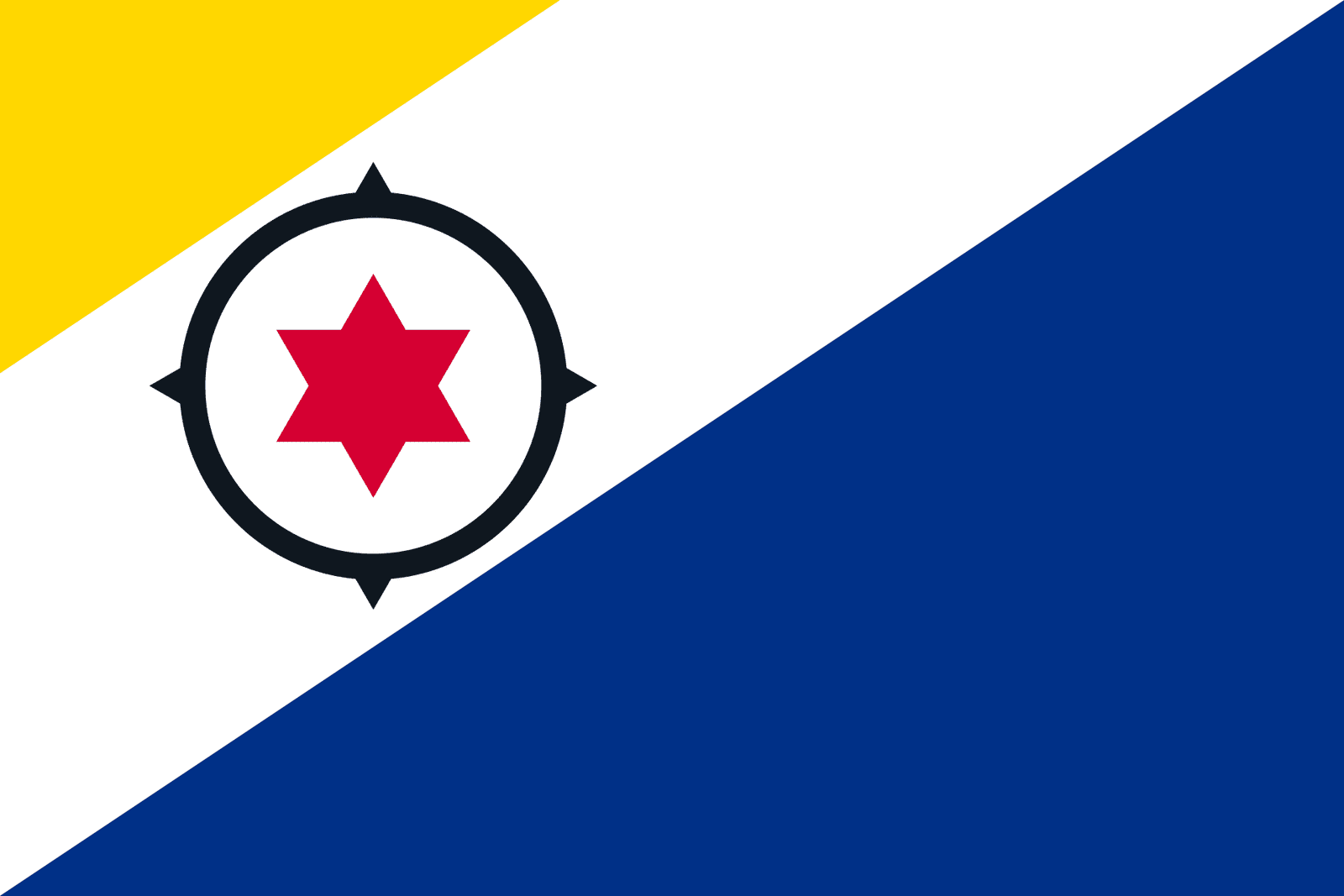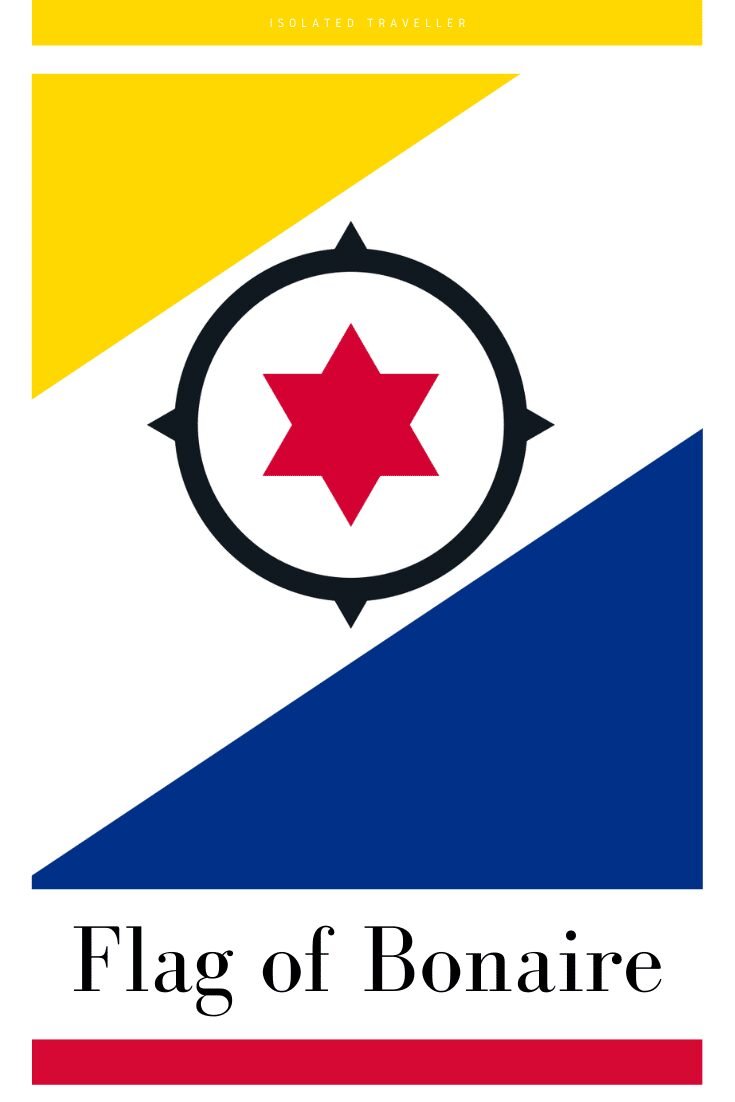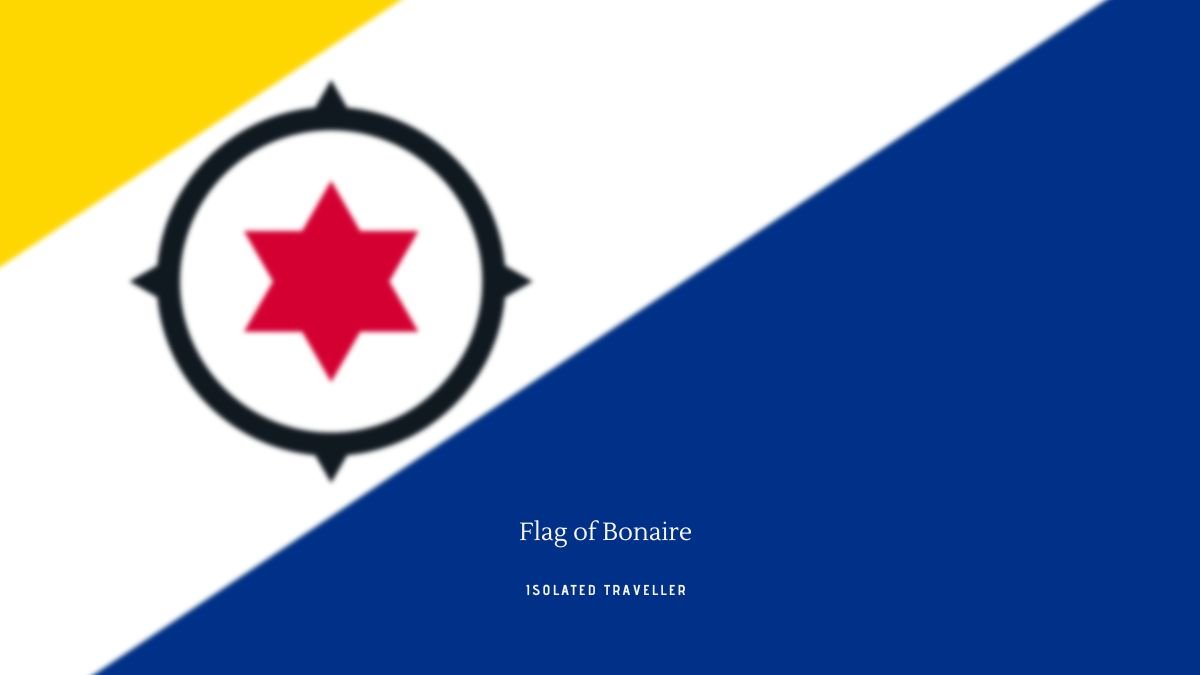Flag of Bonaire
The flag of Bonaire was adopted on March 18, 1976. It has three horizontal bands: the top is red, the middle band is white with five black five-pointed stars, and the bottom band is blue. The flag also contains a yellow triangle in the upper left corner. The flag is modelled after the Dutch flag, which itself is modelled after that of the Netherlands. The colours and triangles represent different things: red symbolizes strength and unity; white symbolizes peace and purity; blue symbolizes justice, perseverance, and honesty; yellow represents prosperity and wealth.
The island’s flag has been changed several times over its history because of different reasons: it was changed when Bonaire gained its independence from Spain in 1816; again when it became an official part of the Netherlands Antilles in 1954; again when it became an autonomous part of this entity in 1976; yet again when it became an independent nation in 2010; and finally once more when it joined Sint Maarten as part of their common country in 2017.
Flag of Bonaire

History
The flag of Bonaire is based on the coat of arms of Bonaire, which was granted in 1816 by William I of the Netherlands. It consists of a shield divided into four parts by a cross; in the upper left part is a yellow lion passant holding an orange sword and red snake; in the lower left part, two blue waves represent sea and sky; on the right side stands a white flamingo crowned with gold fern leaves and holding an olive branch with its beak; below are three green hills topped with palm trees.
The flag was designed by Willemstad High School student Dirk Carpentier, who won first prize at an art competition organized under the auspices of Governor Rollema on March 10, 1950. The flag was adopted as official on 1 May 1950 without any change because there were no national symbols at that time (the Dutch colony had been disbanded in 1954), but it soon started gaining popularity among tourists who liked its simplicity and colours as well as local residents who saw it as their identity marker: blue-white-yellow are national colours while green hills represent their homeland—Bonaire Island itself!
After some time Netherlands Antilles became an autonomous country within the Kingdom of Netherlands but in 1954 it became an independent country which later on changed its name to the Kingdom of the Netherlands in the 2010s.
symbolism
The flag of Bonaire consists of three horizontal bands, with the top band being orange and the bottom two bands being blue. The middle band is made up of five equal horizontal stripes, with the middle stripe having three white vertical lines. There is a red triangle that points outwards from the hoist side of the flag. The triangle has two white five-pointed stars on it. The stars symbolize unity and hope for a better future for Bonaire.
This symbolizes how all people are equal, no matter what colour they are or where they come from. The flag shows that all cultures can live together in peace on this small island!
The flag of Bonaire is a vertical tricolour of red, blue and white.
- The dark blue and yellow triangles represent the sea and sun respectively.
- The white stripe represents the sky.
- The colours red, white, and blue also show Bonaire’s loyalty to the Kingdom of the Netherlands.
- The black compass represents the population of Bonaire who comes from the four corners of the world.
The five-pointed star on this flag represents the island’s five main islands:
- Bonaire
- Kralendijk
- Klein Bonaire
- Rincon/Santa Barbara/Playa Larga/Rinconcito
- Aves Rock or Statia Island.


